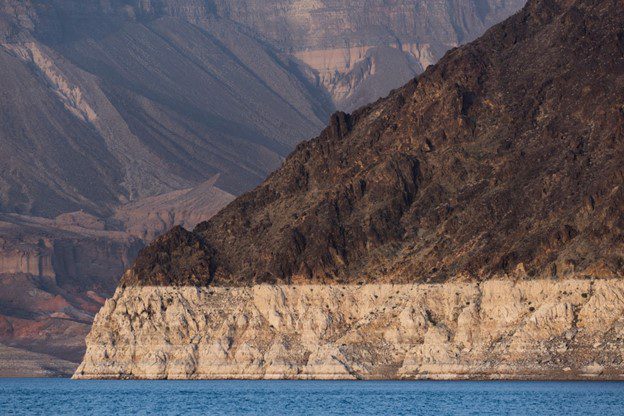
The mere mention of the word “water” in California’s ag community sets off a cascade of effects, emotions and, usually, swear words. It is a complicated issue, currently about as clear as mud and subject to constant attempts at compromised course correction, most of which pleases nobody involved. California is currently the fifth largest ag producer in the world and cannot sustain that production level without appropriate access to water. The sustainable management of our surface and groundwater is literally a matter of life and death.
That being said, this article is not an attempt to wrangle the entire topic of water in California but provide an update of recent legislative and environmental action.
Groundwater
Failure to regulate groundwater has resulted in dry wells (almost 1,400 wells went dry statewide in 2022), withering wetlands, shrinking ecosystems, declining wildlife, land subsidence and fallowed farms. Excessive groundwater pumping in the San Joaquin Valley has resulted in subsidence of as much as 30 feet. Such subsidence results in largely nonrecoverable reduction in the pore volume of the compacted aquitards, and thus a reduction in the total storage capacity of the aquifer system. Near the coast, this can also result in saltwater infiltration, thereby degrading the water quality of any future recharge.
Despite the fact that roughly 85% of Californians depend on groundwater for some portion of their water supply, groundwater was not really regulated prior to 2014. In 2014, the Sustainable Groundwater Management Act (SGMA) was passed. The long-term goal of SGMA was to create management plans that would achieve groundwater sustainability by 2040. The Act contains interim deadlines, one of which was submittal of Groundwater Sustainability Plans (GSPs) for high- and medium-priority basins by January 2022. These plans are evaluated for compliance and effectiveness by the Department of Water Resources.
The plans have three potential assessments: 1) Approved; 2) Incomplete, which means the plan has one or more deficiencies; or 3) Inadequate, which may result in State Water Board Intervention. Of those plans submitted to the DWR to date, below is the current March 2023 status:
- 12 plans Approved,
- 16 plans Incomplete,
- 23 plans Inadequate and
- 66 plans under review
Between 2025 and 2040, the GSPs must be re-submitted every five years. These plans are essential to reaching sustainability of our state’s drought buffer, or “water savings account.”
One legislative attempt at controlling groundwater pumping failed passage in 2022. The legislation, introduced by Assemblymember Steve Bennett (D) of Santa Barbara, specifically targeted new permits for agriculture wells. Domestic wells pumping less than 2 acre-feet/year were excluded as were public water system wells. Had the bill passed, permit applicants would submit to review by local groundwater management agencies, and be required to provide engineering/geology studies confirming non-interference with nearby existing wells. Ultimately, Bennett chose not to bring the bill up for final vote due to regulatory changes made by Gov. Newsom.
Governor Newsom’s referenced Executive Order, N-7-22, issued in March 2022, states that no well permits may be approved by permitting agencies until first approved by the Groundwater Sustainability Agency (GSA) managing the area where the well is proposed. The EO also placed certain requirements on urban water suppliers regarding supply and demand assessments and contingency plan submittals, urged emergency Water Board regulations for “non-functional turf,” suspended certain sections of the Public Resources Code regarding CEQA and addressed fish habitat and hauling of water. The EO does not contain a specified expiration date. The provisions are expected to remain in place until Gov. Newsom declares an end to the drought. The EO may be found in its entirety at: gov.ca.gov/wpcontent/uploads/2022/03/March-2022-Drought-EO.pdf.
Surface Water
Although groundwater availability is essential to our long-term survival, we all naturally pay much more attention to surface water, because…weather. It’s in our faces, whether it’s too little precipitation (the last few years) or too much precipitation (the last few months).
In August 2022, Gov. Newsom published a 19-page plan for boosting water supply projects. His plan included building new reservoirs, desalination plants, recycled water facilities and “fast-tracking” seven water storage projects that had 2014 funding approvals under Proposition 1. The plan also aims to expand programs compensating homeowners who voluntarily replace lawns with xeriscaping. While the Governor’s plan contains admirable goals, it contains no actual enforcement capability.
CA Senate Bill SB 1205 re Water Rights: Appropriation. This bill, signed into law by Gov. Newsom on September 16, 2022 requires the Water Resources Control Board to develop and adopt regulations to consider effects of climate change on watershed hydrology in reviewing applications for water rights permits.
Colorado River Update: Seven states share access to Colorado River water: California, Colorado, Wyoming, Utah, New Mexico, Arizona and Nevada. Additionally, Native American Tribes plus Mexico also have water rights. The lion’s share, by far, belongs to California, more than 1/3 of the river’s natural flow. Most of that water is used for irrigation, providing water to ~475,000 acres of agriculture.
After decades of drought in the Colorado River Basin, Lake Mead in July 2022 stood at its lowest level since 1937. Lake Mead supplies water to about 25 million people. Last summer the Bureau of Reclamation called the first ever Level 2A shortage, reducing use by Arizona, Nevada and Mexico, but not California. Right now, California is precariously ok due to senior water rights, but California’s cutbacks start when water levels hit between 1,040 and 1,045 feet. As of March 3, 2023, after all the recent rain, Lake Mead’s level is 1,046.97, higher by 6+ inches than last year at this time, but still not anywhere close to where we need to be.
But we’ve had all this snow and rain, aren’t we out of the crisis now?
Short answer? No.Why? We have been in a “megadrought” for many years. It is going to take more than one good winter of precip to recharge our aquifers and replenish our reservoirs.
References
Arthur, S., Atume, N., “California Can’t Waiver on Water Regulation,” August 2022. CalMatters.
Becker, R., “Colorado River Cutback – Except for California,” August 16, 2022. CalMatters.
Becker, R., “State Lawmakers Reject Bill to Curb Farms’ Water Pumping,” September 2, 2022. CalMatters.
Executive Order N-7-22, Executive Department State of California, March 28, 2022. gov.ca.gov/wp-content/uploads/2022/03/March-2022-Drought-EO.pdf
Griffin, M., Marciano, R., Zee G., “Drought Monitor Spells Good News for California, But Not Out of the Woods on Megadrought,” March 2, 2023. ABC News.
Hanak, E., Chappelle, C., Harter, T., “Groundwater in California,” May 2017. Public Policy Institute of California.
“Land Subsidence in California,” usgs.gov/centers/land-subsidence-in-california
Moskal, E., Taber, K., “SGMA Implementation and CEQA: Is Now the Time to Reconsider a Statutory Exemption?,” January 10, 2023. somachlaw.com/policy-alert/sgma-implementation-and-ceqa-is-now-the-time-to-reconsider-a-statutory-exemption/
Mulkern, A. “Water Wells Go Dry as California Feels Warming Impacts, December 2022. E&E News, Scientific American.
Phenix, D. “Breaking Down Water Levels Affecting the Las Vegas Valley,” March 3, 2023. 8NewsNowLasVegas.
Rogers, P. “Newsome Calls for Boosting Water Supply Projects to CuCrb California Drought, Climate Change,” August 11, 2022. The Vacaville Reporter.
Quist, R. “Newsome Executive Order Requires GSAs Approve New Well Permits, MAGSA Committed to Quick Approvals on Behalf of Landowners,” April 11, 2022. McMullin Area Groundwater Sustainability Agency.
SB-1205, openstates.org/ca/bills/20212022/SB1205/
Shao, E., “California Has Begun Managing Groundwater Under a New Law. Experts Aren’t Sure It’s Working,” February 17, 2022. Inside Climate News.
“Sustainable Groundwater Management Act (SGMA),” California Department of Water Resources, water.ca.gov/programs/groundwater-management/sgma-groundwater-management











